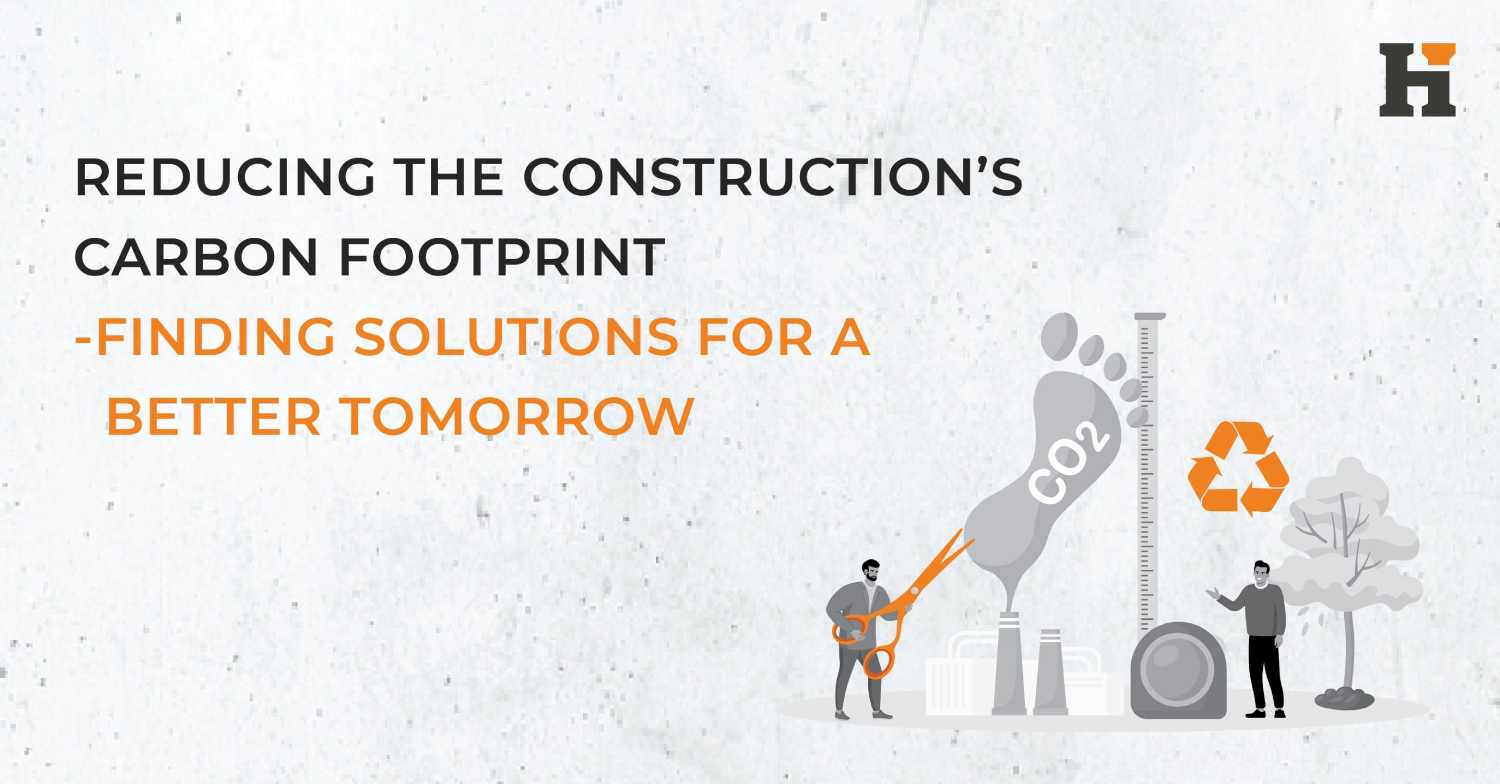The Global Alliance for Buildings and Construction estimates that the built environment is accountable for around 40% of all energy-related carbon emissions worldwide, 11% of which are embodied.
Everybody must pitch in to address the global problem of climate change. Organizations that care about the environment, are creating sustainability goals to lessen harmful ecological repercussions. In order to attain net-zero emissions, several nations are studying various pollution-reduction strategies.
How much Carbon emission is too much?
In order for the carbon footprint to increase due to construction certain unruly contributions knowingly or unknowingly will be made. Pollution is caused by a variety of things, including construction materials, machinery, lighting, HVAC systems, and other elements.
About 40% of greenhouse gas emissions each year are produced by residential and commercial structures, and construction methods add to overall pollution levels.
To meet the worldwide net-zero emission target, business owners must reduce their detrimental ecological effects. Environmental studies anticipate that by 2060, the construction industry will have doubled.
23% of the world’s greenhouse gas emissions come from just three construction materials. Around 11% of total carbon emissions come from concrete, with the remaining 12% coming from steel and aluminum.
Simple solutions, simple practices, let’s bring an end to construction’s carbon footprint
Technology is your best friend
We have a lot to consider when it comes to emission reduction prospects because equipment and vehicle technology is developing quickly.
Among other items to take into account are solar-powered equipment, battery storage, hybrid technology, electric cars & equipment, and renewable diesel. Be open to anything. Try it out. Calculate it. Be informed about it.
By putting in efficiency-boosting technology, you can even create net-zero structures.
The need to find a common ground
Decarbonizing the construction sector is and will continue to be a huge task. A large portion of that task entails rewiring how we conduct business.
We probably don’t completely comprehend all the difficulties that our stakeholders encounter when we talk about a future with reduced emissions until we sit around the table with the clients and discuss goals, material, labor, scheduling, price, and the countless other factors that determine whether a project is successful or unsuccessful.
Adopting some sustainable practices
By reducing material waste, you may raise sustainability standards as well. The equipment is a major source of surface-level pollution in this sector. Unmaintained equipment might malfunction and end up in the garbage.
Buildings should be equipped with efficiency-boosting elements to reduce the use of freshwater. By putting in a rainwater collection system, you may save important resources.
Utilizing materials devoid of volatile organic components might also lessen ecological deterioration (VOCs). VOCs are released into the environment by paints, glues, and sealants.
Ground-level ozone, which is produced by pollutants, contributes to smog and heat waves. When construction, choose VOC-free products to reduce any negative environmental effects.
The undisclosed benefit
You may increase the number of green jobs you create by improving your construction company’s sustainability practices.
Manufacturers, eco-aware builders, environmental engineers, and installation specialists are needed in the area. The adoption of sustainable energy technologies can be aided by a workforce like this.
Will there ever be a dawn of sustainability in the construction industry
By implementing these pollution-reduction techniques over time, you may significantly reduce your carbon footprint, benefiting both the environment and your customers. That’s good news for all sides involved.
Additionally, a large number of studies investigate how technology improvements affect the carbon footprint of the building sector.
They think that by lowering material emissions, using innovative technology, and utilizing renewable energy sources, construction enterprises may become carbon-neutral.
But before any of these executions, the very first thing we need to address is the acceptance of the issue, the issue of the carbon footprint created by construction.
Once, we are in the acceptance stage then only we can plan and get into the problem-solving stage?
Hindustan Infrastructure Solution, with the help of its well-endowed R&D department, is always innovating towards reducing the carbon footprint, we have also reached certain milestones of success with our latest invention of green concrete. Which is not at all green in color, but 100% eco-friendly. (https://hindustanrmc.com/product)







